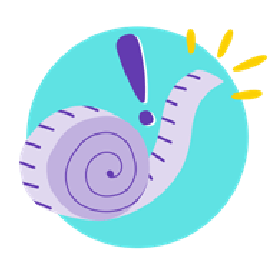

SLEEP
Children with AD may lose up to 103 MINUTES OF SLEEP Every night15
This may lead to reduced happiness, difficulty focusing, emotional & behavioural challenges and even reduced growth.4,15

DEVELOPMENT
Children with AD may experience SLOWER GROWTH Than their peers16
Resulting in them being shorter and weighing less.16

EDUCATION
239 HOURS A YEAR* of concentration time lost by children during severe AD flare-ups at school1,17,18
*Based on the assumption of an average 6-hour school day in France with 38 weeks (266 days) spent at school per year [15% x 6= 0.9 hours of focus affected per day, 0.9 x 266= 239 hours per year].17,18

SOCIAL LIFE
OVER 1 IN 4 CHILDREN Have been bullied because of their AD1
Which can affect children’s schoolwork, ability to make friends, physical health and mental health.19,20

COMORBIDITIES
Infants with AD are more likely to develop other conditions like ASTHMA OR HAY FEVER AS THEY GROW
In fact, around 93% of people living with AD have reported at least one other AD-related condition2,3*
*Conditions reported include allergic conjunctivitis, allergic rhinitis, allergic urticaria, asthma, atopic keratoconjunctivitis, chronic rhinosinusitis, eosinophilic oesophagitis, food allergies, hay fever, nasal polyps and seasonal allergies.3*

MENTAL HEALTH
Children with AD are UP TO 6 TIMES MORE LIKELY to develop depression or anxiety than those without AD21
AD can reach into parts of your child's life beyond their skin. The emotional and social toll can be just as difficult as the physical symptoms, from anxiety and disrupted sleep to lack of focus in school and even bullying. It all adds up.1,12,13,15,20−22

Learn more about AD with these helpful resources:
*ADCT has been validated for use in adult and adolescent patients (12 years and older) with atopic dermatitis.24−26 A modified version of the ADCT for children with AD aged 8-11 years and another for caregivers of children with AD aged 6 months to 11 years have also been developed,3 and are currently pending threshold validation.25
REFERENCES:
- Zuberbier T et al. J Allergy Clin Immunol 2006; 118(1): 226–32.
- Gilaberte Y et al. J Clin Med 2020; 9(6): 1632.
- Weidinger S et al. Br J Dermatol 2024 ; 190(6): 846–857.
- Bawany F et al. J Allergy Clin Immunol Pract 2020; 9(4): 1488–1500.
- Silverberg JI et al. Poster presented at the American Academy of Dermatology Annual Meeting; Orlando, FL; March 7–11, 2025.
- Long Q et al. PLoS One 2022; 17(2): e0263334.
- Bhattacharya R et al. BMC Psychiatry 2014: 14:10.
- Olesen SC et al. BMC Psychiatry 2013:13: 144.
- Ge L et al. PLoS One 2017; 12(8): e0182145.
- Fuentes-Barragán L et al. Acta Derm Venereol 2025; 105: adv42241.
- Shankar A et al. Psychosom Med 2013; 75(2): 161–70.
- Eyerich K et al. Trends Immunol 2015; 36(12): 788–801.
- Bieber T. Ann Dermatol 2010; 22(2): 125–37.
- Boguniewicz M et al. Ann Allergy Asthma Immunol 2018; 120: 10–22
- Chang YS and Chiang BL. J Allergy Clin Immunol 2018; 142(4): 1033–1040.
- Nicholas MN et al. JAMA Dermatol 2022; 158(1): 26–32.
- Parente CMD. Cad. Pesqui., São Paulo 2020; 50(75): 78–94.
- Kamette F. Fondation Robert Schuman 2011; 212: 1–6.
- Wolke D and Suzet TL. Arch Dis Child 2015; 100(9): 879–885.
- Richard A. BMJ Paediatr Open 2021; 5(1): e000939.
- National Eczema Association. Eczema Stats. Available at: https://nationaleczema.org/eczema-facts/. Accessed May 2025.
- Eichenfield LF et al. Pediatr Dermatol 2025; 42(3): 523−531.
- Idris FS. Cureus 2024;16(9): e69416.
- Simpson E et al. BMC Dermatol 2019; 19(1): 15.
- Chuang CC, et al. Dermatol Ther (Heidelb) 2024; 14(12): 3261−3271.
- Pariser DM et al. Curr Med Res Opin 2020; 36(3): 367−376.
Health information contained herein is provided for general educational purposes only. Your healthcare professional is the single best source of information regarding your health. Please consult your healthcare professional if you have any questions about your health or treatment.
MAT-SG-2500306-(v1.0)-09/2025